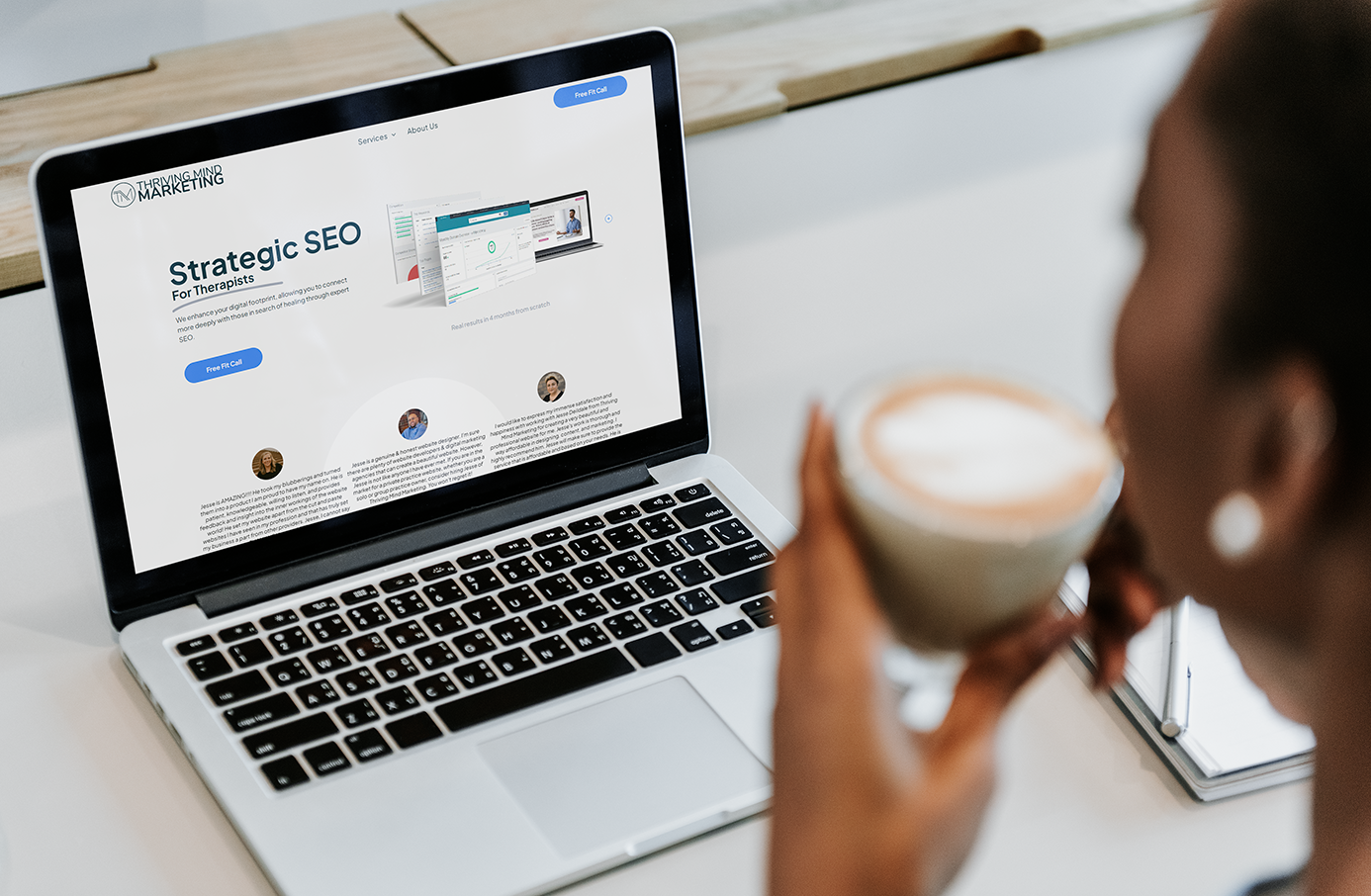A successful therapy website not only provides essential information about your practice and services but also offers an exceptional user experience (UX) that leaves visitors satisfied and eager to schedule an appointment. By understanding and implementing UX principles in your website design, you can create a seamless and accessible online platform that connects with your target audience and effectively presents your therapy practice. Optimizing your website's UX can result in increased client satisfaction, appointment bookings, and overall practice growth.
In this article, we'll explore essential UX principles to guide your therapist website design efforts, such as site navigation, readability, mobile-friendliness, and accessibility. We'll also provide practical tips for implementing these principles and ensuring a user-focused website design that effectively caters to your audience's needs. By incorporating these UX approaches, you can create a welcoming digital environment that supports your therapy practice and fosters lasting connections with potential clients.
1. Simplify Site Navigation: Intuitive and User-Friendly Layouts
One of the fundamental aspects of UX is ensuring that your website is easy to navigate, allowing users to find the information they seek quickly and efficiently. A well-organized menu, clear page hierarchy, and accessible links contribute to a seamless browsing experience.
Consider incorporating the following elements to enhance your therapy website's navigation:
-
Main Menu: Create a simple main menu with clear categories that cover essential information (e.g., Home, Services, About, Contact). Limit the number of menu items to avoid overcrowding and maintain a clean, user-friendly layout.
- Breadcrumbs: Implement breadcrumbs (a secondary navigation system that shows users their current location on your website) to help users understand the website structure and navigate back to previous pages easily.
- Internal Linking: Strategically incorporate internal links within your content to guide users to related pages, increasing site engagement and providing valuable information.
2. Focus on Readability: Typography, Spacing, and Colour Contrast
Typography, spacing, and colour contrast significantly impact the readability of a website's content. Prioritizing readability in your website design enhances UX and helps users efficiently absorb the information on your site.
-
Typography: Choose legible, professional font styles for your therapy website's text. Sans-serif fonts, such as Arial or Helvetica, are often considered easier to read on digital screens.
- Spacing: Establishing ample white space between text, images, and other elements on your website reduces visual clutter and enhances readability. Consider employing consistent line spacing, margins, and padding to ensure a clean and focused site design.
- Colour Contrast: As mentioned earlier, ensure sufficient colour contrast between your text and background colours to support visually impaired users and reduce eye strain. Adhere to WCAG 2.0 standards for optimal readability and accessibility.
3. Prioritize Mobile-Friendliness: Responsive Design for All Devices
With the increasing number of users accessing websites on mobile devices, it's crucial to create a responsive website design that adapts to various screen sizes. Optimizing for mobile-friendliness not only improves UX but also contributes to better search engine rankings.
-
Responsive Design: Implement a responsive design that adapts your website's content and layout to different devices, providing an optimal browsing experience on smartphones, tablets, and desktops.
- Touch Targets: Ensure that clickable elements, such as buttons and links, have sufficient size and spacing to accommodate touch navigation on mobile devices.
- Mobile Performance: Regularly test your website on various mobile devices to ensure it loads quickly, functions correctly, and maintains a consistent look and feel across platforms.
4. Enhance Accessibility: Cater to Users with Disabilities
By optimizing your therapy website for accessibility, you demonstrate a commitment to inclusivity and expand your potential client base to individuals who rely on assistive technologies, such as screen readers. Incorporate the following elements to create a more accessible website:
-
Alt Text: Provide accurate and informative alt text descriptions for images and graphics, helping visually impaired users understand the content and context of these visual elements.
- Keyboard Navigation: Facilitate keyboard navigation by ensuring that all interactive elements can be accessed and operated using keyboard commands alone. This functionality is particularly important for users with motor issues or those who rely on keyboard-only navigation.
- Captioning and Transcripts: For multimedia content, such as videos and podcasts, provide captions, transcripts, and audio descriptions to accommodate users with hearing or visual impairments.
5. Encourage User Engagement: Calls-to-Action and Interactive Elements
Your therapy website should engage users and encourage them to take action, whether that's booking an appointment, signing up for a newsletter, or exploring additional content. Encourage user engagement by applying these strategies:
-
Calls-to-Action (CTAs): Create clear, concise, and visually appealing CTAs that inspire users to take specific actions, such as booking a consultation or downloading a resource.
- Interactive Elements: Offer interactive elements, such as polls, quizzes, or comment sections, to encourage user participation and create an engaging experience that fosters a connection with your therapy practice.
- Visual Appeal: Attractive designs and visuals can significantly impact user engagement. Curate an aesthetically pleasing website with high-quality images, a cohesive colour palette, and consistent branding elements to create a visually engaging and enjoyable user experience.
Partner with Experts to Optimize Your Therapy Website's UX
By incorporating essential UX principles into your therapist website design, you can create a user-focused, accessible, and visually appealing online presence that captivates potential clients and drives appointment bookings. Prioritizing site navigation, readability, mobile-friendliness, accessibility, and user engagement will significantly improve your website's user experience and contribute to your therapy practice's success.
If you're ready to elevate your therapy website with exceptional user experience and design, consider partnering with the experts at Thriving Mind Marketing. Their team specializes in creating customized, highly engaging websites tailored specifically for therapists and counsellors. Allow their experienced team to guide you through the process of optimizing your website's UX, helping you create a seamless, visually attractive, and user-friendly digital platform designed to enhance client satisfaction and boost appointment bookings. Contact Thriving Mind Marketing today and embrace the power of exceptional UX for your
therapy website.
More Tips To Help You Build Your Practice Online






